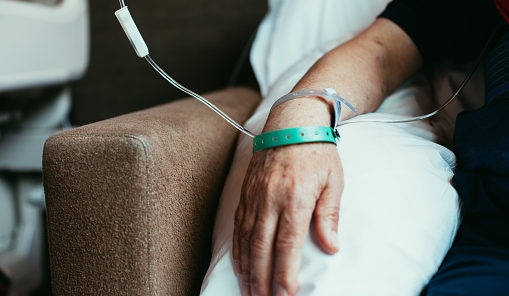The addition of aprepitant to a regimen to reduce chemotherapy-induced nausea among women was effective in a recent phase 3, double-blind, placebo-controlled randomized clinical trial.
Women aged ≤50 years with gastrointestinal cancer who had little to no history of alcohol use (defined as alcohol intake of <5 times per week and 100 g per day) who were receiving FOLFIRI (fluorouracil, leucovorin, and irinotecan) or FOLFOX (fluorouracil, leucovorin, and oxaliplatin) chemotherapy regimens were included in the trial. They were randomized to one of two groups: the aprepitant group (aprepitant, 125 mg, orally 60 minutes before initiation of chemotherapy on day one and 80 mg orally each morning of days two and three; palonosetron, 0.25 mg, intravenously; and dexamethasone, 6 mg, orally 30 minutes before chemotherapy initiation on day one) or the placebo group (placebo, 125 mg, orally 60 minutes before initiation of chemotherapy on day one and 80 mg orally on each morning of days two and three; palonosetron, 0.25 mg, intravenously; and dexamethasone, 12 mg, orally 30 minutes before chemotherapy initiation on day one).
The study spanned four clinical centers in China. The complete response (CR) rate, the main outcome, was defined as the rate of patients without emesis episodes or rescue medication use during the overall phase of the first cycle. Secondary and exploratory outcomes included incidences of vomiting and nausea.
Of 248 patients enrolled in the trial, 243 were evaluated in the final analysis: 125 who received aprepitant and 118 who received placebo. The mean age of the entire cohort was 40.1 years.
Overall, patients in the aprepitant group were much more likely than women who received placebo to achieve CR (87% vs 66.7%; P<0.001). This was also true when stratified by different trial phases (acute: 92.7% vs 75.8%, respectively; P=0.001; delayed: 88.6% vs 70%, respectively; P=0.001). Adverse events (AEs) rates were comparable between the groups (80% vs 81.3%, respectively; P=0.79). The aprepitant group had no grade 3 or 4 treatment-related AEs.
The study was published in JAMA Network Open.
Credit: Original article published here.










